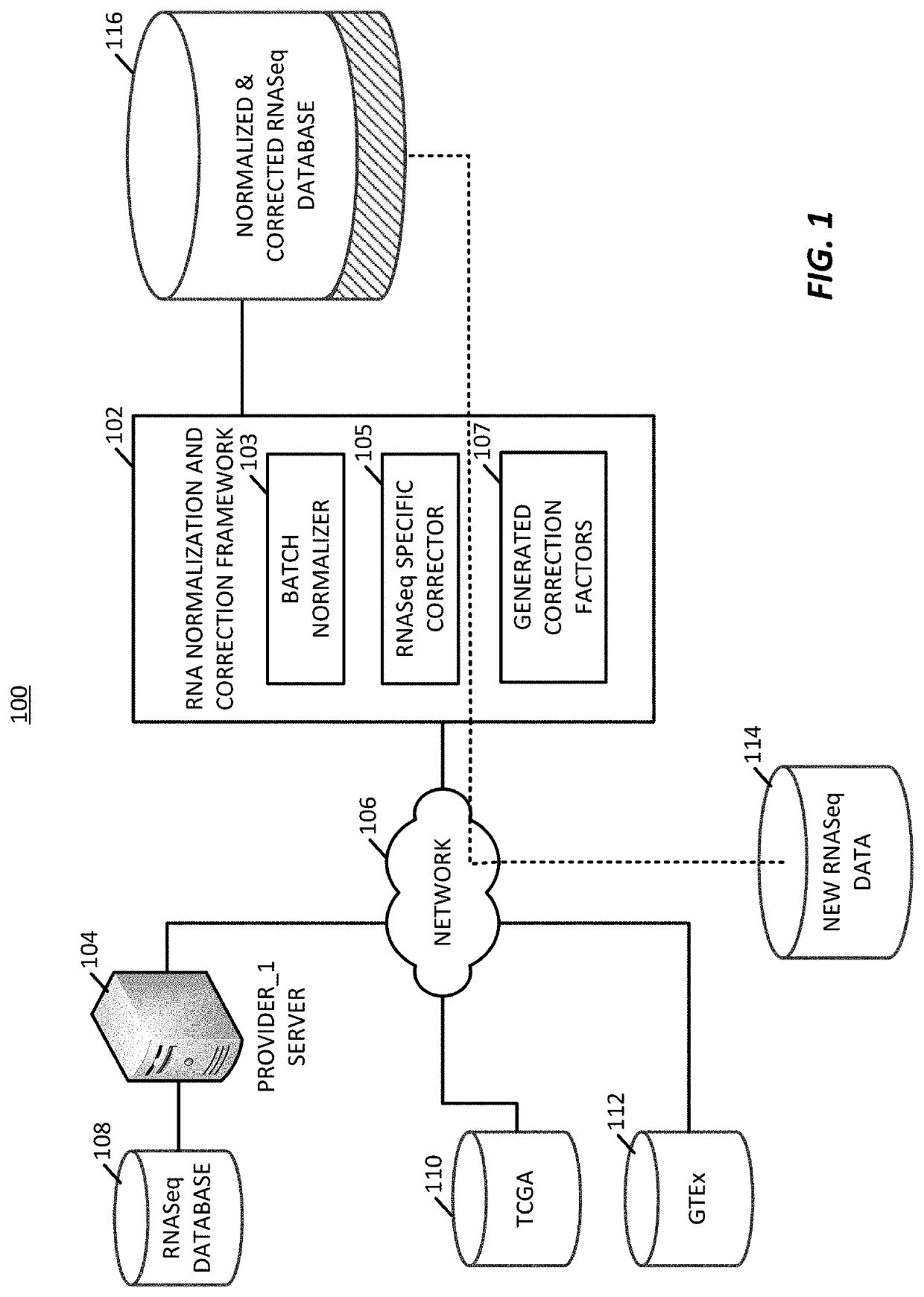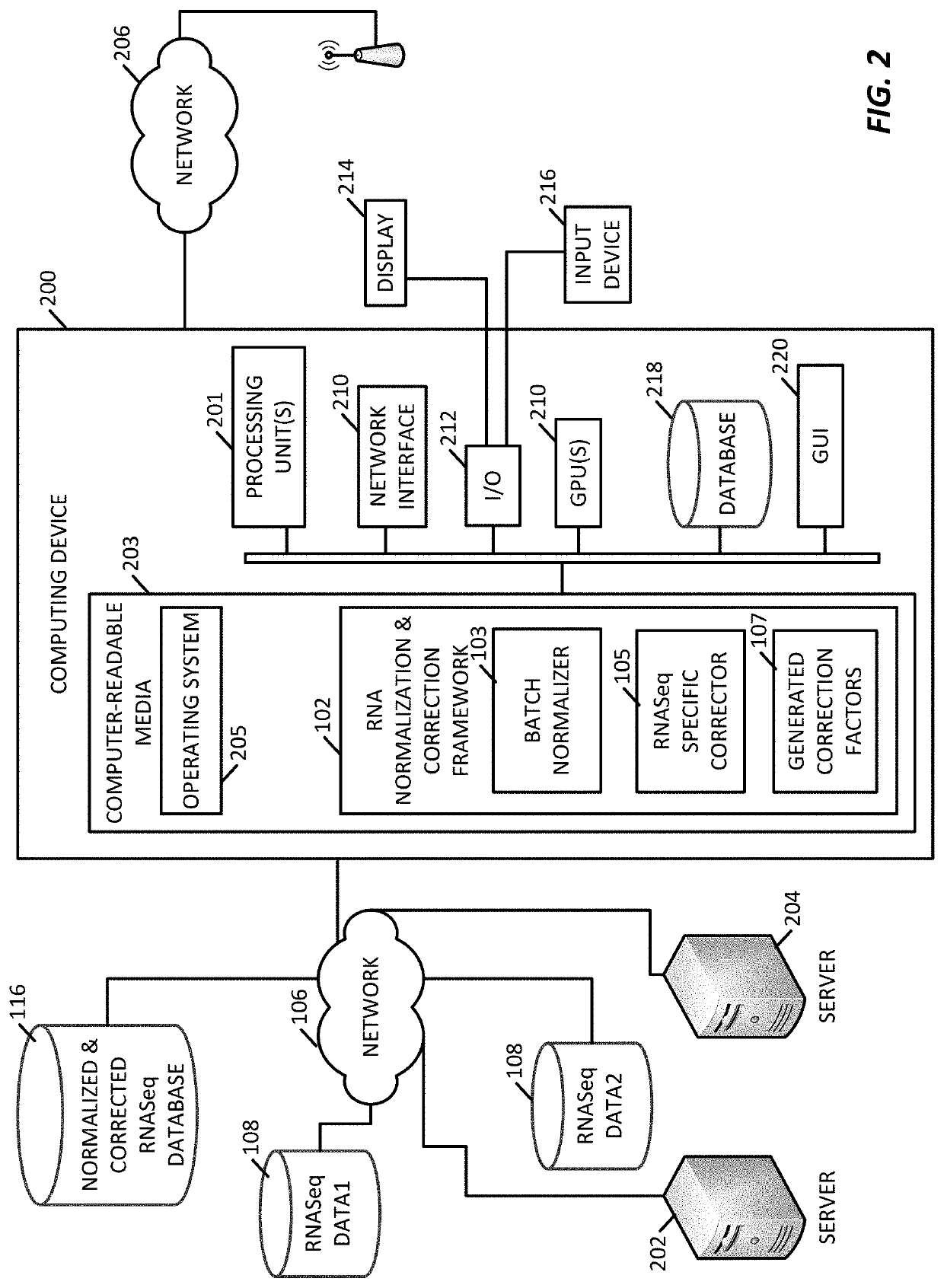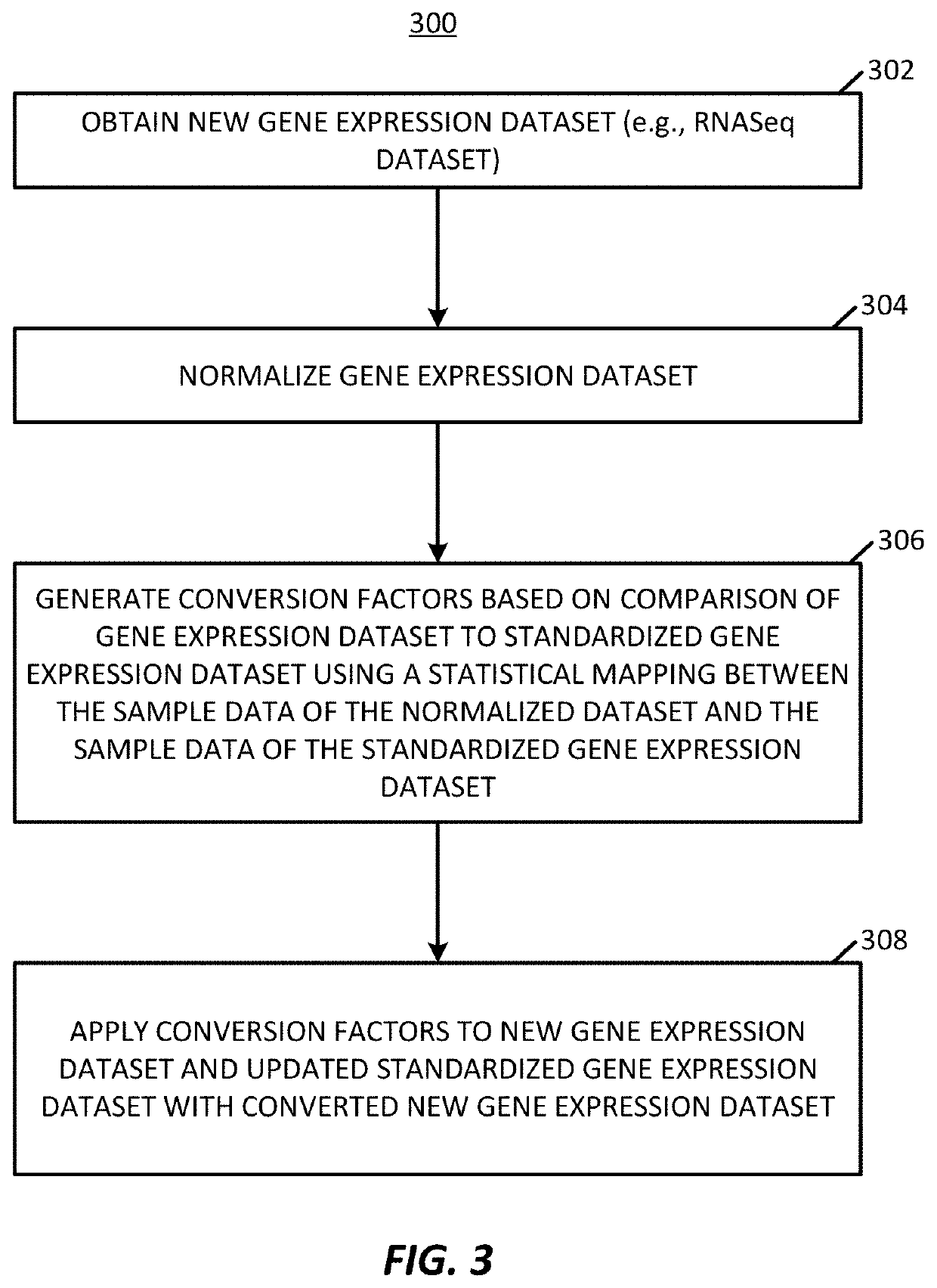Methods of normalizing and correcting RNA expression data
a gene expression and data technology, applied in the field of normalizing and correcting gene expression data, can solve the problems of high sensitiveness of sample type biases in gene expression data, inability to easily compare gene expression data across databases and data sets, and inability to synchronize rna seq data, so as to reduce systematic bias and reduce systematic bias
- Summary
- Abstract
- Description
- Claims
- Application Information
AI Technical Summary
Benefits of technology
Problems solved by technology
Method used
Image
Examples
Embodiment Construction
[0049]The present application presents a platform for performing normalization and correction on gene expression datasets to allow for combining of different datasets into a standardized dataset, such as a previously normalized dataset, that may continuously incorporate new data. The present techniques generate a series of conversion factors that are used to on-board new gene expression datasets, such as unpaired datasets, where these conversion factors are able to correct for variations in data type, variations in gene expressions, and variations in collection systems. For example, conversion factors are able to correct against data collection bias, variations in laboratory data generation processes, variations in data sample size, and other factors that can cause incongruity between datasets. The techniques may correct older datasets for inclusion into new dataset. For example, existing, stable datasets, such as the TCGA (https: / / portal.gdc,cancer.gov / ) or GTEx (https: / / gtexportal...
PUM
 Login to View More
Login to View More Abstract
Description
Claims
Application Information
 Login to View More
Login to View More - R&D
- Intellectual Property
- Life Sciences
- Materials
- Tech Scout
- Unparalleled Data Quality
- Higher Quality Content
- 60% Fewer Hallucinations
Browse by: Latest US Patents, China's latest patents, Technical Efficacy Thesaurus, Application Domain, Technology Topic, Popular Technical Reports.
© 2025 PatSnap. All rights reserved.Legal|Privacy policy|Modern Slavery Act Transparency Statement|Sitemap|About US| Contact US: help@patsnap.com



